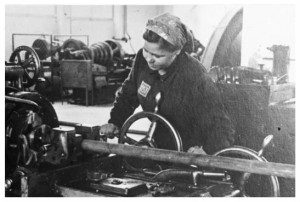Chapter 6 has provided me with the most information so far from this book. Before reading this I really did not know that labor and that people were forced into slavery during the late 1930’s early 1940’s. I really just through people got send to camps and worked there or got killed. Not only that but it was interesting to see the sort of hierarchy that came from these works. For example, the Ostarbeiter obviously had it the worst and I really could not believe they were treated completely like slaves. I could never imagine surviving on such little amounts of food and such poor living conditions. I think the most shocking thing is that depending on where you were from, either the east or the west it really determined your whole life and how you would be treated by the Nazi party. It is very difficult for me to come to terms with all of this.
These people were clearly treated horrible and forced into working and living in horrible conditions. However, if you look at the Germany economy this really could not have been better for them. They were able to bring in foreign workers that were forced labor and not paid in order to expand the city and improve the economic structure of the city. I really do not agree what happened but it is smart to use the people to help build the economy. 

We often forget how many different nations and peoples at different times have used slave or semi-slave labor to boost their economies. From the British in their colonies to some Floridian companies in the 1970s and 1980s, attempts to maximize profits by reducing labor costs are all too common.
The NAZI racial hierarchy determined so much of the treatment people received. Daily rations in France, for example, was about 1300 calories/day in 1941. If you were a Pole in Warsaw, it was about 800 calories/day. Of course, if you were a Jew in Poland it was even worse: less than 500 calories/day.